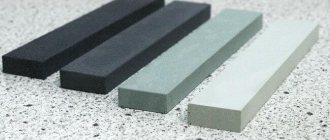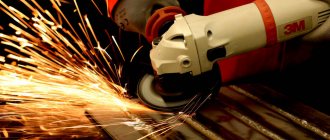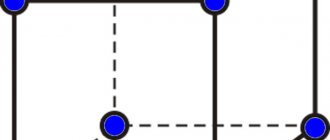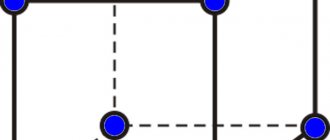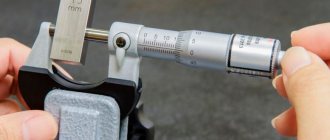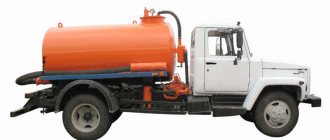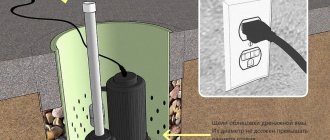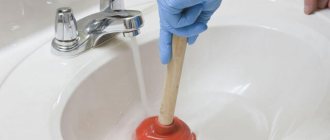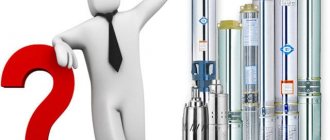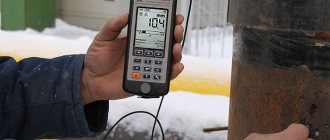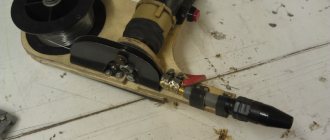What is indicated in the labeling
The main characteristics taken into account when choosing wheels are their type, type of abrasive, bond, hardness and grain size. In this case, hardness and structure for many types of processing play a more important role than the abrasive material.
Product labeling contains the following information:
- circle type;
- product size;
- abrasive material;
- graininess of the circle;
- product hardness;
- structure;
- binding material;
- permissible rotation speed;
- circle accuracy class;
- imbalance of the circle.
When choosing a wheel, it is necessary to take into account that the markings made in accordance with various GOSTs differ in the designations of grain size, hardness and other parameters. In addition, manufacturers use different markings for their wheels, excluding some parameters and using old and new designations. Let's give an example of decoding
1 – 25A – white electrocorundum is used as an abrasive; 2 – average abrasive grain size 370 µm (F46); 3 – medium-soft hardness, type L; 4 - middle structure (6); 5 – ceramic binder (V); 6 – maximum rotation speed 35 m/s; 7 — accuracy category B; 8 – 3rd class of imbalance.
This is interesting: How and with what to solder stainless steel at home: tips, videos, photos
Types and characteristics of grinding wheels
The grinding wheels used today have a fundamentally identical design: in general, it is a body of rotation with a different profile, formed from an array of abrasive grains with a binder, and having a mounting hole in the center for mounting on the spindle (shaft) of the machine/machine. The wheel is made by gluing abrasive grains of a certain size using bonds, which provide the necessary strength to the product and prevent it from breaking under the influence of centrifugal forces during rotation.
Wheels are classified according to their profile (section), type and grain size of the abrasives used, type of binding material and some characteristics.
The following types of grinding powders are used as abrasive materials:
- Electrocorundum (marking “A”) - normal (grades 12A – 16A), white (grades 22A – 25A), chromium (grades 32A – 34A), titanium (grades 37A) and zirconium (grades 38A, can be marked with the letter “Z”) ;
- Silicon carbide (marked “C”) - black (grades 52С – 55С) and green (grades 62 – 64С).
There are grinding wheels that use diamond, CBN and other materials as an abrasive, but they have a different design (metal base on which a layer of abrasive is applied) and characteristics, and are not discussed in this article.
The grain size of the abrasives used for the manufacture of wheels lies within the range of F36 - F220 according to GOST R 52381-2005 (corresponds to the international specification FEPA - Federation of European Producers of Abrasives, European Federation of Abrasives Manufacturers) and M63 - M10 according to GOST 3647-80 (currently time partially cancelled). In wheels with abrasives F36 - F220, the average grain size ranges from 58 - 525 microns, and with abrasives M63 - M10 - from 7 to 63 microns.
When forming a grinding wheel, the following types of bonds can be used:
- Ceramic (marking V, obsolete - K);
- Bakelite (marking B, B4, BF, obsolete - B, B4, BU);
- Vulcanite (marked R, obsolete - B).
Types of Abrasive Wheel Bonds
Ceramic bonds are inorganic components based on various types of clays with the addition of feldspar, quartz and other substances. After firing, the ceramic binder provides the wheel with the necessary rigidity, wear resistance and strength (including temperature), but it has increased fragility. These types of wheels are not used in machines and machines that process shock loads.
Bakelite binder is a resin (bakelite) that can be used in its pure form, with reinforcing additives (marked BF/BU) or with graphite (marked B4/B4). Due to its elasticity, the bakelite bond is resistant to shock loads, but does not withstand high temperatures and aggressive environments (including some types of cutting fluids, coolants). Also, wheels on a bakelite bond have good self-sharpening properties - worn grain is relatively easily torn off from the bond, exposing new grain, which ensures stable abrasive properties.
Vulcanite bond is a vulcanized rubber (actually high-density rubber or ebonite) that can have various additives to increase strength and chemical resistance. Currently, this type of grinding wheel is the least used.
Grinding wheels can be molded with different ratios of abrasive grain and binder, which characterizes their structure, which can be of the following types:
- Dense (marking from 1 to 4);
- Medium (marking 5 - 7);
- Open (marking 8 - 10);
- Highly porous (marking 11, 12).
The higher the number, the less dense the structure of the circle, and the greater the distance between the grains.
Depending on the type of bond and density, the wheels can have different hardness - a characteristic indicating the strength of the bond's holding of abrasive grains. The higher the hardness, the stronger the grain is held in the bond, and the more difficult it is to break out when grinding the surface of the product. In terms of hardness, the circle can be of the following types:
- Very soft (BM1, BM2; F, G);
- Soft (M1 – M3; H, I, J);
- Medium soft (SM1, SM2; K, L);
- Middle (C1, C2; M, N);
- Medium-hard (ST1 – ST3; O, P, Q);
- Solid (T1, T2; R, S);
- Very hard (VT; T, U);
- Extremely hard (HH; V–Z).
The alphanumeric hardness marking corresponds to the old standard GOST 19202-80 (not used today), in Latin letters - to the standard GOST R 52587-2006.
Finally, grinding wheels can have accuracy classes “AA”, “A” and “B”, and unbalance classes from 1 to 4.
Grinding wheels are divided into several types according to their profile (section):
Grinding wheel profiles
- Type 1 - straight profile (PP);
- Type 2 - ring (K);
- Type 3 - with one-sided conical profile (3P);
- Type 4 - with double-sided conical profile (2P);
- Type 5 - with one-sided groove (PV);
- Type 6 - cylindrical cup (CC);
- Type 7 - with double-sided undercut (DVD);
- Type 10 - with double-sided groove and hub (PVDS);
- Type 11 - conical cup (CC);
- Type 12, 14 - disc-shaped (T, 1T);
- Type 20 - with sampling;
- Type 21 - with double-sided sampling;
- Type 22 - with recess and undercut;
- Type 23 - with recess and recess on one side (PVK);
- Type 24 - with recess and recess on one side and with a recess on the opposite side;
- Type 25 - with recess and recess on one side and recess on the opposite side;
- Type 26 - with recess and recess on both sides (PVDK);
- Type 35 - straight profile end;
- Type 36 - straight profile with pressed-in fasteners (PN);
- Type 37 - ring profile with pressed-in fasteners;
- Type 38 - with one-sided hub;
- Type 39 - with double-sided hub.
All characteristics, geometric shape and dimensions of grinding wheels for stationary electrical machines and machine tools in Russia are regulated by the GOST R 52781-2007 standard. Previously, the GOST 23182-78 standard for wheels for hand-held machines was in force, but it has now been cancelled.
A separate group includes wheels for hand-held grinding machines, made of non-woven materials with abrasive grain applied to them. These tools are manufactured according to the enterprises’ own standards; today they are presented in large quantities to perform a wide range of operations.
Purpose of grinding wheels
The grinding tool is designed to remove the surface layer of material in order to give the part the specified geometric dimensions or the required surface roughness. In addition, a straight grinding disc is used for grinding castings, cleaning welds, and removing scale, rust and other contaminants from the surface of metal products. Various shapes of grinding wheels allow for mechanical processing and grinding of not only straight, but also curved surfaces. In this case, the abrasive tool can act as a template for the profile of the surface being processed. Fine grinding is performed to give the surface of the product the required cleanliness class. To do this, use polishing discs with very fine grains and a soft bond. Another area of use for grinding wheels is sharpening various tools: carpentry, metalworking and metal-cutting tools used on machine tools.
A separate category consists of grinding wheels with a shank, designed for use with hand-held power tools with chucks.
Abrasives and grit
The abrasive material is indicated by alphanumeric markings. Thus, electrocorundum is marked with the letter A. White electrocorundum - from 22A to 25A, normal from 12A to 16A, chromium from 32A to 34A. There are also titanium electrocorundum (37A), zirconium (38A) and other varieties. The higher the number, the higher the quality of the material. Silicon carbide is designated by the letter C and is divided into black (from 52C to 55C) and green (62C – 64C).
Diamond wheels are marked as follows:
- AC2 – circle of normal strength.
- AC4 – increased strength.
- AC6 is a high-strength abrasive.
- AC32 is a monocrystalline abrasive.
The grain size determines the cleanliness of the resulting surface. The marking indicates the size (width) of the grain. In accordance with the old GOST 3647-80, this parameter is indicated in units equal to micrometers divided by 10 (10 = 100 microns). Micropowders are marked with the letter M. According to the new GOST R 52381-2005, the grain size is indicated by the letter F and a numerical designation. Moreover, unlike the old standard, the larger the number, the smaller the abrasive grain size.
Hardness and other parameters
Hardness is the ability of the binder to keep the grains from being pulled out, which affects the ability to self-sharpen. There are a total of 8 hardness groups according to the table below.
The next parameter is the structure of the wheel, which implies the percentage of abrasive per unit volume. The dense structure is designated by numbers from 1 to 4, medium 5 – 7, open 8 – 10 and highly porous 11 and 12.
Next comes the link designation. Ceramic is designated by the letter V or K according to the old GOST, bakelite - V (B) and vulcanite R (B). Bakelite bond with hardener is designated BF (BU), with graphite filling B4 (B4). Accuracy class AA, A and B. The most accurate is AA, wheels of this class are used in automatic lines. And the last value is the class of tool mass imbalance. Indicated by numbers from 1 to 4. This parameter does not affect the balancing of the tool assembled with flanges.
Abrasive disc size
The marking of abrasive wheels by size is written as follows: DхТхН (where D is the outer diameter, T is the height, H is the diameter of the hole). The D parameter can reach a maximum size of 1100 mm, the H value can be up to 305 mm, and the T parameter varies from 0.18 mm to 250 mm.
The types of CBN and diamond discs are described in more detail in GOST 24747-90. The marking of the shape of such grinding wheels consists of three or four symbols indicating the cross-sectional shape of the body and layer, its location on the wheel, and also provides information about the design features of the body.
For example, 150x16x32 is the size of a 25A white electrocorundum abrasive wheel.
Reminder when choosing abrasive wheels:
- When choosing the diameter of the circle, you should take into account the number of spindle revolutions and the ability to provide optimal speed.
- The larger the diameter, the less specific wear of the circle. There are fewer grains on the working surface of small circles. So, during operation they wear out unevenly.
- When choosing a diamond wheel, you should take into account the width of the diamond-bearing layer. If used incorrectly, ledges may appear on the surface of the wheel.
This is interesting: Cold metal stamping: technology, types, equipment
What kind of circles are there for emery - another educational program
Many people have an emery machine at home - an electric machine equipped with grinding wheels. Most often, something is sharpened or polished using emery. There are a lot of abrasive grinding wheels on sale; in addition to them, it is convenient to use diamond grinding wheels in everyday life. However, for initial processing, for rough processing of metal, it is better to use abrasive wheels. Let's look at the classification of sanding wheels, what they are and where they are used.
White circles - they are made of electrocorundum 25A
The most popular wheels, since they are designed for processing non-hard metals, are perfect for the home. Sharpen knives, axes, scissors, process ordinary steel (corners, etc.) - such a circle will work just fine. Huge selection of sizes and mounting holes:
The marking of electrocorundum 25A is most often white. Sometimes manufacturers add a coloring element, which can result in the circle being blue or orange. When turning ordinary metal on such a wheel, a very high-quality sharpening is obtained, since the composition of the wheel itself is soft, the temperature during friction is low, so blue scale does not appear on the metal, and since there is none, the metal retains its properties perfectly.
This primarily applies to knives and other cutting objects, since it is very important not to overheat the metal when sharpening. So an alumina grinding wheel is a great choice for your home.
The sizes of circles are different for different machines. The fit is most often 32 mm - if you buy a wheel for home emery. The most common circle sizes are 125, 150, 175 and 200 mm in diameter, fit 32 mm and thickness 10, 16, 20, 25 mm. As you know, sandpapers for home use come in different sizes, which is why the wheels come in several sizes.
Green circles - made of silicon carbide 64C
Green wheels are intended for processing tool steel and hard alloys (for example, brazing on drill bits for a rotary hammer).
The material is more resistant to abrasion, the temperature during sharpening is high, so if you decide to sharpen a kitchen knife with this circle, you will probably ruin the knife, since scale will appear on the blade instantly.
Therefore, such a wheel is used only for turning tools made of tool steel (R6M6, R18, steel with the addition of cobalt, also hard alloys VK8, T5K10, T15K6). Of course, sharpening carbide is also not very convenient; you need to use the finest grain of the wheel, but it is best, of course, to sharpen carbide with diamond sharpening wheels.
The marking of the circle is 64C, the dimensions are the same as for electrocorundum.
It is worth noting that in addition to small wheels for everyday use, large-diameter grinding wheels are produced and placed on large machines. The fit of such circles is 76 mm, 127 mm and 203 mm.
Diameters 250, 300, 350 and 400 mm. Electrocorundum and silicon carbide.
These are large, heavy and expensive wheels to produce. For example, here I am holding a circle 64c 400*40*127 25CM - photo:
What kind of “grain” is there?
Many who buy grinding wheels for emery do not even know how the grit is marked. I think this point also needs to be covered in more detail.
So, the grinding wheel grain is 8, 12, 16, 25, 40-N.
8 is the smallest, 40 is the largest.
In addition to the numbers, you can also see the letters SM - this means a medium-soft circle, the most common because it is not very expensive and endures quite well. A little less often you can find ST grain on sale - medium-hard, its cost is noticeably higher, however, the abrasion resistance is much higher.
For precise sharpening, of course, it is better to take a fine grain, 12 or 16. Often they buy wheels for sharpening skates from us, these are 150 * 8 * 32 12 CM - a wheel with a diameter of 150 mm, thickness only 8 mm, fit 32 mm, fine grain, allows for sharpening just perfect.
For example, to install an emery wheel on a 150 mm machine, it is best to buy one 150*20*32 25 CM - a standard wheel for emery with a diameter of 150 mm, fit 32 mm, wheel width 20 mm. Grit 25 - medium, suitable for sharpening both small tools (knives, scissors) and large ones - axes. SM - a standard medium-soft circle for household use is also suitable. Such a circle costs about 120 rubles.
Among the manufacturers, I recommend grinding wheels produced in the city of Volzhsk - excellent quality (the wheels do not fall apart and last for quite a long time), low price, delivery by transport companies throughout Russia.
Another note: Cable cutter as a cable cutter - is it possible?
Structure and hardness index
The density of the structure of grinding wheels is indicated by the percentage of the volume of abrasive grains per unit volume of the wheel. The more abrasive, the denser the structure of the grinding wheel will be.
When sharpening a tool, a wheel with a less dense structure is better able to clean the surface of material particles, poses less risk of deformation and cools faster.
Often, specialists use disks of medium hardness, but it all depends on the type of work being performed, the coating being processed and the tool itself.
What are the structure numbers and volumes of abrasive in the grinding wheel:
- dense structures include units of measurement from 1 to 4;
- Average density includes numbers 5-8;
- to open – from 9 to 12;
- a highly porous structure is observed in circles with indicators 13, 14>.
However, do not confuse wheel hardness with abrasive hardness. According to GOST 2424, the hardness of a grinding wheel is distinguished by a capital letter.
According to GOST R 52587-2006, there are the following designations:
- very soft - letters F and G;
- to soft circles – H, I, J;
- medium softness includes markings K, L;
- averages are M, N;
- circles of medium hardness are designated by the letters O, P, Q;
- solids are designated as R and S;
- very hard – T, U;
- Extremely hard ones include V, W, X, Y, Z.
What grinding wheel hardness should I choose? This depends on many parameters - the characteristics of the material or surface being processed, physical properties, and, of course, the power of the grinding machine. If you need to maintain the exact shape of the material being processed, you should purchase a wheel with a high degree of hardness. Soft ones are used to prevent cracks and burns, also when grinding without additional liquid-lubricant cooling of the surface.
For example, let's take the same 25A grinding wheel, which has a hardness class of K and a structure of 7. This means that this disc is medium-soft and has a medium abrasive structure.
Grinding wheel for cylindrical grinding machine
If you have 1A1 250x40x34 24A F30 L 5 V 35 B 3 written on your grinding wheel, then I think after reading it you can easily decipher it
Grinding wheel shapes
Grinding wheel 1A1 250x40x34 24A F30 L 5 V 35 B 3 For cylindrical grinding, the wheel must have profile A1A or 1V1. In Soviet circles it was designated PP or 1.
Grinding wheel geometry
Grinding wheel 1A1 250x40x34 24A F30 L 5 V 35 B 3
250 is the diameter of the grinding wheel 40 is the thickness of the grinding wheel 34 is the diameter of the hole in the grinding wheel
Abrasive and grinding wheel grain
Grinding wheel 1A1250x40x34 24A F30 L 5 V 35 B 3
All grinding wheels consist of two main components - the grinding grains that actually cut and the bond that holds them together during the cutting process. The ratio of grain to free space and bond in the wheel characterizes the structure of the grinding wheel.
An ideal abrasive should remain sharp with a minimum number of sharp edges, and when dull, the abrasive of the grinding wheel should chip off, renewing fresh cutting edges. Aluminum Oxide - This abrasive is used for grinding carbon steel and alloys, high speed steel, annealed ductile iron, wrought iron, bronze. There is white - 22A , 23A , 24A , 25A (the higher the number, the higher the quality) and normal - 12A , 13A , 14A , 15A , 16A ; chromium - 32A , 33A , 34A ; titanium - 37A . Foreign manufacturers of grinding wheels have the following designation:
A brown alumina, WA white alumina WAB white alumina + blue bond WA white alumina + special bond WAR white alumina + red bond WAY white alumina + yellow bond PA pink alumina RA ruby alumina DA white and brown oxide aluminum SA semi-brittle aluminum oxide HA monocrystalline aluminum oxide C black silicon carbide
Oxide - This abrasive is used for rough grinding and is designated 38A or Z. Silicon Carbide - This abrasive is used for grinding gray and white cast iron, soft bronze, brass and aluminum and non-metallic materials, designated 64C-62C or GC .
Ceramic aluminum oxide - this abrasive is used for precision grinding of difficult-to-cut steels and alloys, designated AS1-5 , the higher the number, the greater the aluminum oxide content, for example 1 is 10%.
Grain size is the number of linearly spaced holes in one inch of screen used for final screening of grain. The larger the grain size, the coarser the grain. The smaller the grain size, the more suitable the wheel is for fine grinding.
Grinding wheel grain size
Grinding wheel 1A1250x40x34 24A F 30 L 5 V 35 B 3
Coarse from 8 to 24 (F 180-80) Medium from 30 to 60 (F 56-24) Fine from 80 to 180 (F 24-12) Very fine from 220 to 600 (F 10-4)
Hardness of grinding wheels
Grinding wheel 1A1250x40x34 24A F30 L 5 V 35 B 3
Bond hardness is measured in terms of the hardness of the grinding wheel. For example, the bond has a hard grade if the bond between the abrasive grains of the grinding wheel is very strong, and it well keeps the grains from being pulled out under the action of cutting forces during grinding. Conversely, the bond has a soft degree if the application of a small force is enough to pull the grains out of the circle. Hard wheels are used for machining work with a small contact area. Soft grinding wheels are used for fast and coarse material removal and for processing hard materials.
| Name | Designation according to GOST 19202-80 | Designation according to GOST R 52587-2006 |
| Very soft | VM1, VM2 | F, G |
| Soft | M1, M2, M3 | H, I, J |
| Medium soft | SM1, SM2 | K, L |
| Average | C1, C2 | M, N |
| Medium-hard | ST1, ST2, ST3 | O, P, Q |
| Solid | T1, T2 | R, S |
| Very hard | VT | T,U |
| Extremely hard | Thu | V, W, X, Y, Z |
Grinding Wheel Structure
Grinding wheel 1A1250x40x34 24A F30 L 5 V 35 B 3
The structure of a tool is usually understood as the percentage of the volume of abrasive material per unit volume of the tool. The more abrasive grain per unit volume of the wheel, the denser the structure of the tool. The structure of the abrasive tool affects the amount of free space between the grains.
| Structure | Designation |
| Dense | 1, 2, 3, 4 |
| Average | 5, 6, 7 |
| Open | 8, 9, 10 |
| Highly porous | 11, 12 |
Grinding wheel bundle
Grinding wheel 1A1250x40x34 24A F30 L 5 V 35 B 3
The bond in the grinding wheel is designed to hold the abrasive grains together and should facilitate the process of self-sharpening of the grains. The choice of the type of grinding wheel bond affects the processing speed, its type and accuracy.
The ceramic bond is made from inorganic substances - clay, quartz, feldspar and a number of others by grinding them and mixing them in certain proportions. Ceramic bonded grinding wheels are marked with the letter ( V ). Old designation - ( K )
The ceramic bond gives the abrasive tool rigidity, heat resistance, shape stability, but at the same time increased fragility, as a result of which it is undesirable to use wheels with a ceramic bond under shock loads, for example, during rough grinding.
Bakelite bond mainly consists of an artificial resin called bakelite. The marking of circles with bakelite has a Latin letter ( B ) in its designation. The old designation is ( B ). Compared to ceramic, wheels with a bakelite bond have greater elasticity and elasticity, heat the metal being processed less, but have less chemical and temperature resistance.
The bakelite binder can be with reinforcing elements ( BF , old designation - BU ), with graphite filler ( B4 , old designation - B4 ).
Vulcanite bond is a synthetic rubber that has been vulcanized. The abrasive wheel is marked with the letter ( R ). Old designation - ( B )
Grinding wheel accuracy class
Grinding wheel 1A1250x40x34 24A F30 L 5 V 35 B 3
The accuracy of the dimensions and geometric shape of abrasive tools is determined by three classes AA , A and B. For less critical abrasive processing operations, class B . A tool is more accurate and of higher quality . For work in automatic lines, on high-precision and multi-circuit machines, high-precision AA . It is distinguished by higher accuracy of geometric parameters, uniformity of grain composition, balance of abrasive mass, and is made from the best grades of grinding materials.
Grinding wheel grit
The grain size of the grinding wheel affects the quality of the resulting surface when grinding a surface, for example, the finer the grain of the wheel, the higher the surface roughness class. The grit size of the grinding wheel is selected depending on the type of grinding operation: rough, semi-finishing or finishing, as well as the necessary requirements for cleanliness and precision of processing. During the rough grinding operation, wheels made of larger grains are used than during finishing. High demands on the cleanliness of the resulting surface and processing accuracy are in most cases achieved by using wheels with finer grains. Hardened parts and hard alloys are ground with finer-grained wheels than non-hardened ones. For grinding parts made of materials that are prone to more clogging (brass, copper, and many others), wheels with larger grains are used. For large contact surfaces of the grinding wheel with the workpiece (for example, grinding with the end of the wheel), wheels with larger grains are used.
The grain size of a grinding wheel characterizes the cross-sectional size of the wheel grains. The surface cleanliness and processing accuracy depend on the size of the grains; The grain size is determined by sifting abrasive grains through a series of sieves with different numbers of holes.
The grain size of grinding wheels is selected depending on the type of work performed and the requirements for the roughness of the surface being processed.
The grain size of the grinding wheel affects the quality of the sanded surface; The finer the grain of the wheel, the cleaner the surface is. The grain size of grinding wheels is characterized by the size of its abrasive grains and is designated by the corresponding number.
Grinding wheel imbalance class
Grinding wheel 1A1250x40x34 24A F30 L 5 V 35 B 3 The imbalance class of a grinding wheel characterizes the imbalance of the wheel mass, which depends on the accuracy of the geometric shape, the uniformity of mixing of the abrasive mass, the quality of pressing and heat treatment of the tool during its manufacture. Four classes of permissible imbalance of the mass of circles have been established ( 1 , 2 , 3 , 4 ). Unbalance classes have nothing to do with the accuracy of balancing wheels and flanges before installing them on a cylindrical grinding machine.
Types of grinding wheels
According to the non-professional classification of grinding wheels, the following types are distinguished:
- Velcro discs
are made of sanding paper on a Velcro base, which is attached to the support using a self-adhesive backing. This material is considered consumable and is used in woodworking, metalworking, repair and construction. The Velcro sanding wheel is installed on a grinder or eccentric sander, as well as on a handmade drill. It is marked with a different color indicating the grain size. For example, brown is suitable for wood and metal, blue is suitable for stainless steel, and black can be used to process minerals. - The flap wheel
is fan-shaped, has good elasticity and easily adapts to any surface. It is mainly used for grinding pipes, fittings, and wood products. - A fiber grinding wheel
is a grinder equipment for processing surfaces made of ferrous and non-ferrous metals and steel. Used for cleaning weld seams and removing spatter. The fiber base for such discs is made by processing cellulose. - The diamond grinding wheel
is used for fine grinding of carbide materials, glass, ceramics, precious and semi-precious stones. The diamond blade has an optimal balance of fragility and strength and has a large working reserve.
Types of grinding wheels
There are various classifications of types of grinding wheels based on their technical characteristics: by shape, by brand of abrasive, by type of bond, by grain size. The combination of such parameters determines the type of processing for which a particular abrasive disc can be used. According to their production purpose, they are divided into grinding (for coarse and fine grinding) and stripping (grinding). The former are used for all types of grinding and sharpening, and the latter are used for cleaning metal surfaces from various contaminants.
One of the most common subtypes of grinding wheels, which has its own name, is emery wheels used in electric sharpeners.
Grinding
Abrasive discs used for machining, sharpening, grinding and polishing are collectively called grinding discs. Basically, they are used to remove irregularities and reduce surface roughness on products made of mineral materials and various metals. There are a large number of shapes and sizes of such tools, most of which are intended for grinding work on metal. In addition to the most common straight profile grinding wheels, which are commonly used for sharpening tools and working on flat surfaces, there are many other types of specially shaped ones. For example, disc wheels are used for processing the teeth of cutters and cutters, conical wheels are used for grinding threads, and cups are used for face grinding. There are also grinding wheels for polishing work on flat and profile surfaces.
Roughing
One type of rotary grinding tool is a grinding wheel.
By this name you can understand that they are used for cleaning surfaces before the main machining or welding operations. These grinding wheels have a straight profile (type according to GOST No. 1), and therefore another name for such a tool is a cleaning disk. They are used for processing castings and welds, as well as for removing burrs, rust and old paintwork. If a stripping disc is used to remove crusts and scale from cast blanks and forgings, then it is called a stripping disc. During operation, grinding wheels are subjected to strong impacts, so bakelite mixtures are used as a binder. Buy a grinding wheel for tungsten steel from AliExpress from 587 rubles →
